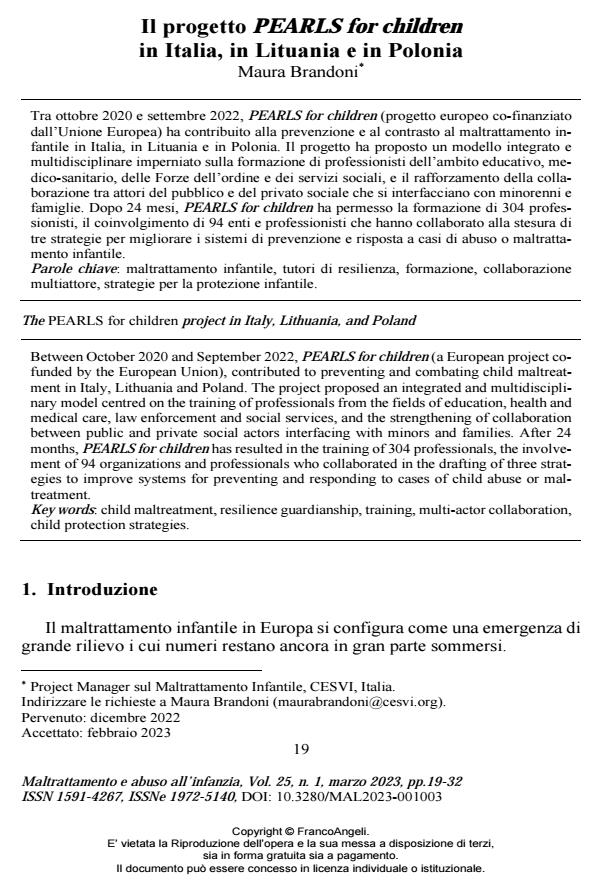Il progetto PEARLS for children in Italia, in Lituania e in Polonia
Titolo Rivista MALTRATTAMENTO E ABUSO ALL’INFANZIA
Autori/Curatori Maura Brandoni
Anno di pubblicazione 2023 Fascicolo 2023/1
Lingua Italiano Numero pagine 14 P. 19-32 Dimensione file 185 KB
DOI 10.3280/MAL2023-001003
Il DOI è il codice a barre della proprietà intellettuale: per saperne di più
clicca qui
Qui sotto puoi vedere in anteprima la prima pagina di questo articolo.
Se questo articolo ti interessa, lo puoi acquistare (e scaricare in formato pdf) seguendo le facili indicazioni per acquistare il download credit. Acquista Download Credits per scaricare questo Articolo in formato PDF

FrancoAngeli è membro della Publishers International Linking Association, Inc (PILA)associazione indipendente e non profit per facilitare (attraverso i servizi tecnologici implementati da CrossRef.org) l’accesso degli studiosi ai contenuti digitali nelle pubblicazioni professionali e scientifiche
Tra ottobre 2020 e settembre 2022, PEARLS for children (progetto europeo co-finanziato dall’Unione Europea) ha contribuito alla prevenzione e al contrasto al maltrattamento infan-tile in Italia, in Lituania e in Polonia. Il progetto ha proposto un modello integrato e multidi-sciplinare imperniato sulla formazione di professionisti dell’ambito educativo, medico-sanitario, delle Forze dell’ordine e dei servizi sociali, e il rafforzamento della collaborazione tra attori del pubblico e del privato sociale che si interfacciano con minorenni e famiglie. Dopo 24 mesi, PEARLS for children ha permesso la formazione di 304 professionisti, il coinvolgimento di 94 enti e professionisti che hanno collaborato alla stesura di tre strategie per migliorare i sistemi di prevenzione e risposta a casi di abuso o maltrattamento infantile.
Parole chiave:maltrattamento infantile, tutori di resilienza, formazione, collaborazione mul-tiattore, strategie per la protezione infantile.
Maura Brandoni, Il progetto PEARLS for children in Italia, in Lituania e in Polonia in "MALTRATTAMENTO E ABUSO ALL’INFANZIA" 1/2023, pp 19-32, DOI: 10.3280/MAL2023-001003